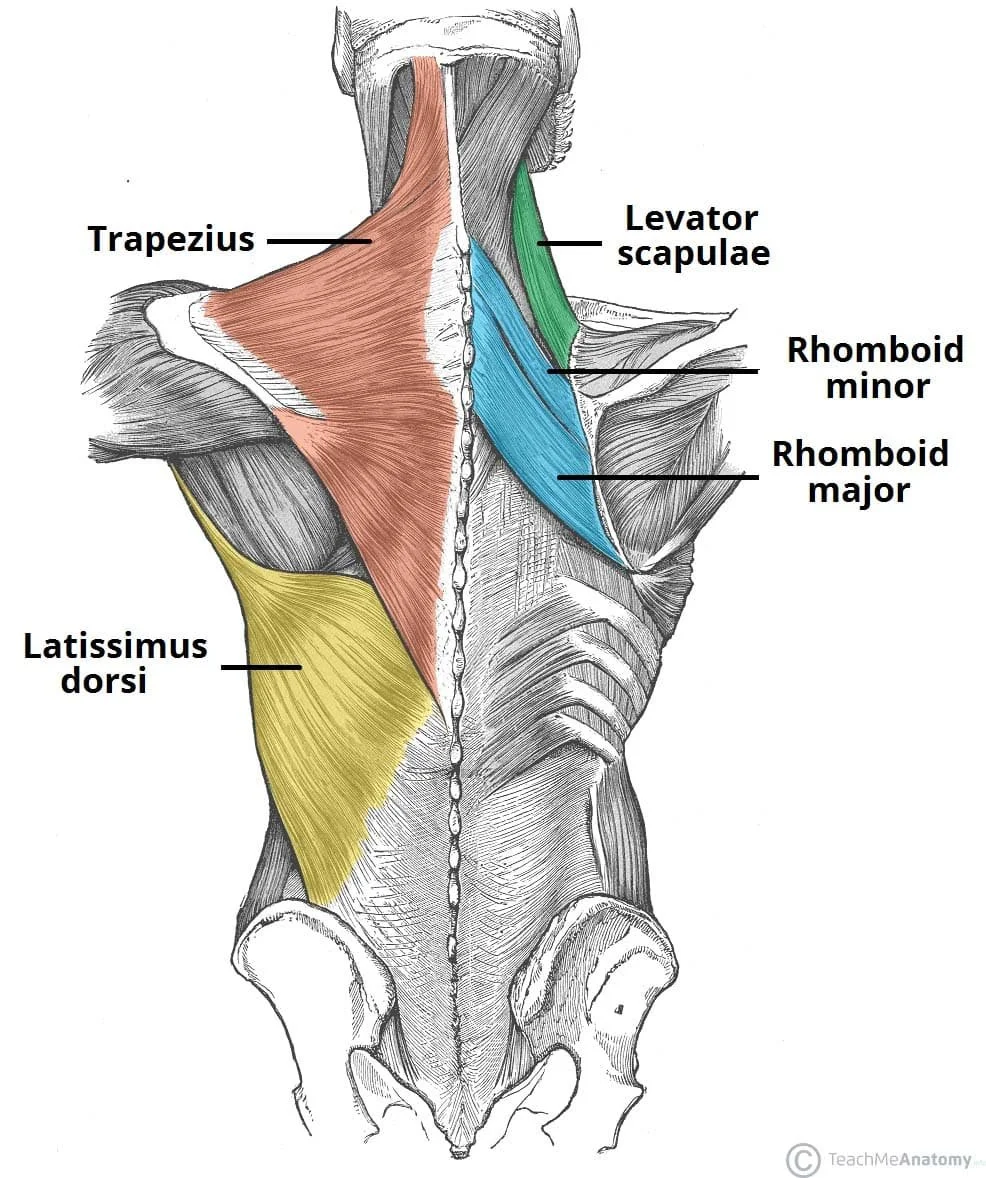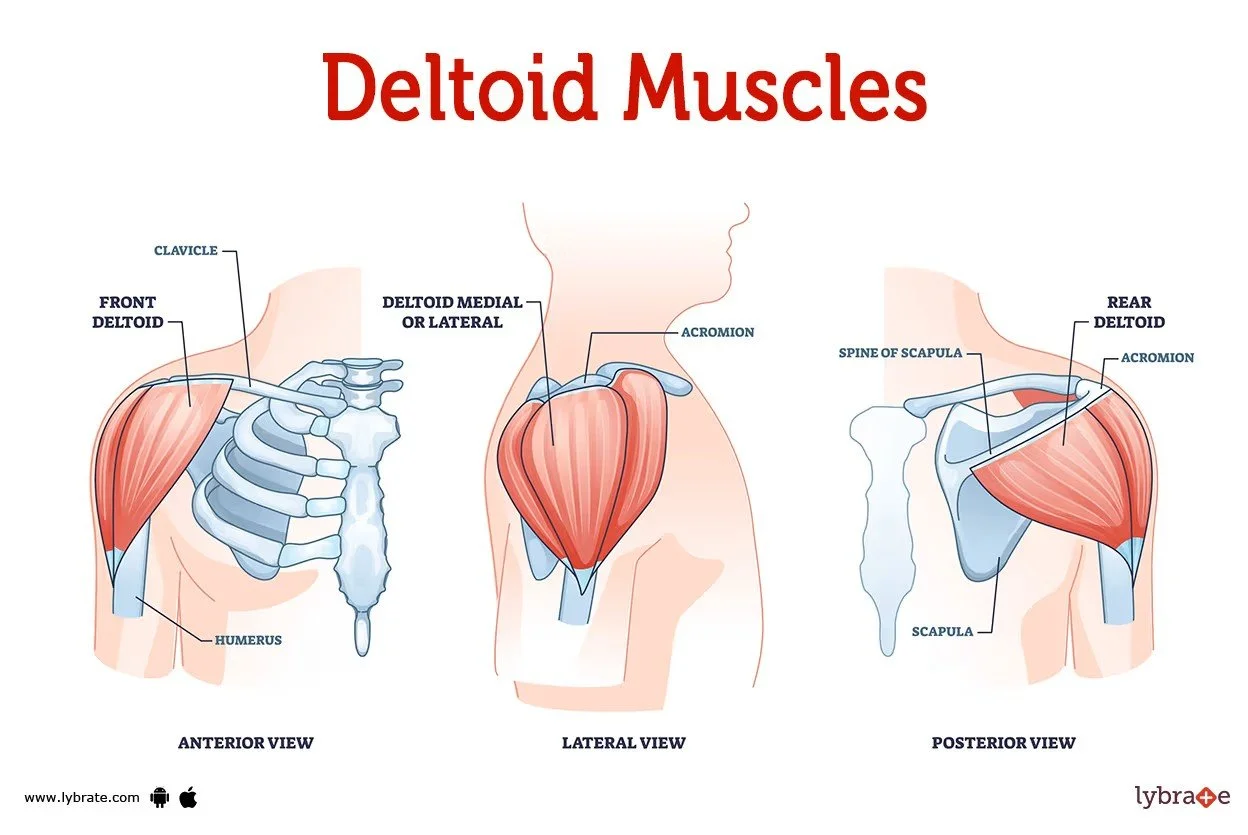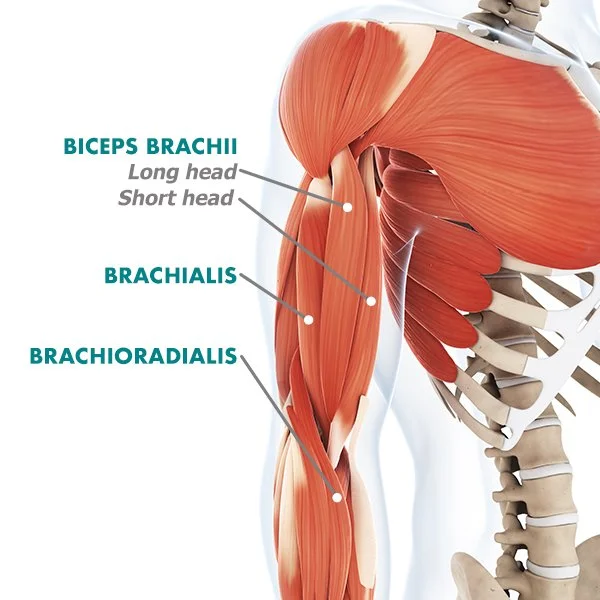
ANATOMY
UPPER BODY
BACK
Superficial back muscles are the ones closest to the surface just under your skin. They help you move your shoulders. They’re usually the ones people think of when picturing their back muscles. Superficial muscles include your:
Latissimus dorsi: People usually shorten this name to lats. Your lat muscles are the largest muscles in the upper half of your body. They start below your shoulder blades and extend to your spine in your lower back.
Levator scapulae: These are smaller muscles that start at the side of your neck and extend to your shoulder blades.
Rhomboids: The rhomboid muscles connect your shoulder blades to your spine.
Trapezius: Most people know trapezius muscles by the shortened name traps. Your traps start at your neck, go across your shoulders and extend down to your lower back in a V shape.
Serratus anterior: The serratus anterior muscles cover the top of your ribcage, just below your armpits.
Intermediate back muscles
The intermediate back muscles are just above and below your ribcage. They help move your ribs, including when you’re breathing. You have two intermediate back muscles:
Serratus posterior superior: The muscle in the space between your shoulder blades (the shoulder girdle). It’s under your rhomboid muscles.
Serratus posterior inferior: The muscle at the bottom of your ribcage. It’s under your lats.
BICEPS
The biceps brachii bends the forearm toward the upper arm and is thus used in lifting and pulling movements. It also supinates the forearm (turns the palm forward or upward).
Two Heads:
The biceps brachii has two heads:
Long head: Originates from the glenoid fossa of the scapula (shoulder blade) and the supraglenoid tubercle.
Short head: Originates from the coracoid process of the scapula
TRICEPS
The triceps brachii muscle, located at the back of the upper arm, is a three-headed muscle responsible for extending the elbow. It consists of the long, lateral, and medial heads, all of which insert onto the olecranon process of the ulna.
Here's a more detailed breakdown:
This head originates from the infraglenoid tubercle of the scapula (shoulder blade) and crosses both the shoulder and elbow joints.
This head originates from the posterior aspect of the humerus (upper arm bone) superior to the radial groove.
This head originates from the posterior aspect of the humerus inferior to the radial groove.
All three heads converge into a single tendon that inserts onto the olecranon process of the ulna (the bone in the forearm).
Function:
The triceps brachii's primary function is to extend the forearm at the elbow joint, which is essential for straightening the arm.
The long head also helps stabilize the shoulder joint and can be contracted further when the arm is behind the torso.
CHEST
The primary muscles of the chest, collectively known as the pectorals, are the pectoralis major and the pectoralis minor. These muscles work together to move the arms towards the body, rotate them inward, and assist with shoulder flexion. The pectoralis major is the larger, more superficial muscle, while the pectoralis minor lies underneath and plays a supporting role.
Detailed Explanation:
This muscle is fan-shaped and originates from the sternum, clavicle, and upper ribs. Its fibers converge to insert into the humerus (upper arm bone). The pectoralis major has two main heads: the clavicular head (upper portion) and the sternocostal head (lower portion). The clavicular head is responsible for flexion (raising the arm) at the shoulder, while the sternocostal head contributes to adduction (pulling the arm towards the body) and internal rotation.
This smaller, triangular muscle lies beneath the pectoralis major and attaches to the ribs and the scapula (shoulder blade). It primarily assists with downward rotation and depression of the shoulder blade.
While not directly part of the pectoral muscles, the serratus anterior is a crucial muscle for stabilizing the shoulder blade and assisting with arm movements like reaching and pushing.
This small, triangle-shaped muscle is located under the clavicle and helps to depress and stabilize the clavicle, which can be important for breathing and shoulder movements.
SHOULDERS
The primary shoulder muscles include the deltoid, the rotator cuff (supraspinatus, infraspinatus, teres minor, and subscapularis), and other muscles that help with shoulder blade movement like the trapezius, rhomboids, and serratus anterior.
Elaboration:
Deltoid:
This muscle is located on the outside of the shoulder and is responsible for abduction (lifting the arm away from the body), flexion (lifting the arm forward), and extension (lifting the arm backward).
Rotator Cuff:
The four muscles of the rotator cuff are crucial for stabilizing the shoulder joint and allowing a wide range of motion. They are:
Supraspinatus: Primarily responsible for lifting the arm away from the body (abduction).
Infraspinatus: Helps with external rotation of the arm.
Teres Minor: Also contributes to external rotation.
Subscapularis: Primarily responsible for internal rotation of the arm.
Other Shoulder Muscles:
These muscles contribute to shoulder blade movement and overall shoulder stability.
Trapezius: Helps with shrugging the shoulders and retracting the shoulder blade (drawing it back).
Rhomboids: Also assist in retracting the shoulder blade.
Serratus Anterior: Helps with protraction (pushing the shoulder blade forward) and rotation of the scapula.
These muscles attach to the upper arm bone and clavicle and help with arm adduction (bringing the arm towards the body) and rotation.
A large back muscle that plays a significant role in shoulder adduction, extension, and internal rotation.





